30MHz visited the Rheinberg (Germany) location, where they were given a tour through the brand new Elite greenhouse from Christiaan Rinkel and Liza Lievens. Elite is the quarantine phase (the plants that are not yet declared negative for disease), and the library phase (the plants that are clean and ready for the supply chain). At the request of the Breeding Department, more than 150 different cultivars are received and tested in the quarantine department to keep the plant as healthy as possible. The Elite greenhouse is an important milestone in the development and implementation of Dümmen Orange’s Greencare program.
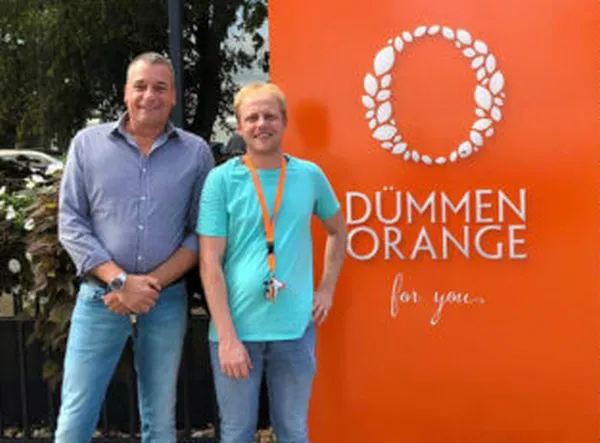
Greencare is the phytosanitary policy of Dümmen Orange, aiming to supplying healthy and clean cutting material to growers worldwide and includes mandatory hygiene measures for both employees and production facilities. The employees shower on arrival and put on work clothing. Anything brought into the building is disinfected first and often does not get any further into the building except for the canteen. At each greenhouse, staff have to wash their hands again and after which they put on nitrile gloves with diesel gloves on top (diesel gloves are the plastic gloves you find at gas stations). If a plant does get sick, the protocol is; extra isolation, after which the phytosanitary team searches for a solution in collaboration with product specialists and breeders. However, this is very different for each plant.
The 30MHz team spoke to Liza Lievens, Grower of Elite and asked her a few questions.
Which variables do you record in the greenhouse and which systems do you use for this?
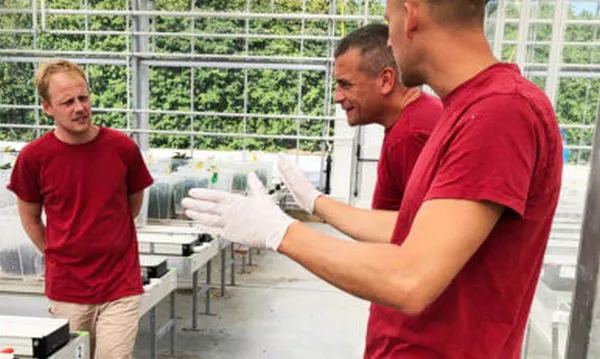
Light in uMol&PAR
We measure the amount of light to see what the plants have had in total in one day, and for example with this we also control watering.
We also measure the radiation in watts, with this we control the curtain.
Temperature in Celsius
Temperature can be influenced by humidity, pipe heating, curtains open/closed; energy screen (in winter it lets the light get through, but keeps the warmth in), black out curtains can sometimes help for extra shade during hot days and then we have a shading curtain, this ensures that we have no direct sunlight in the greenhouse (spring, summer and sometimes autumn).
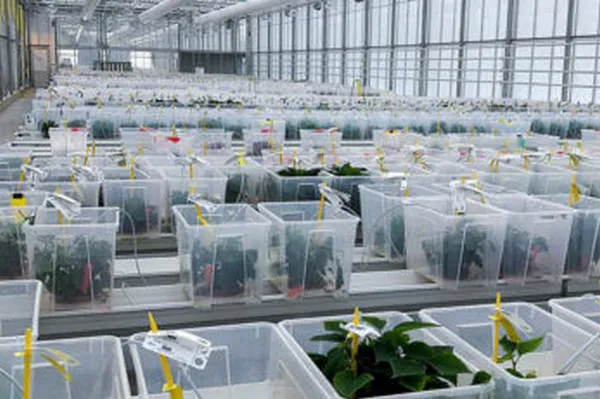
Humidity in the greenhouse in percentages and absolute humidity (density per m2)
Humidity is controlled by the computer, what we set is achieved through a fog system.
Pressure in Pascal
The pressure is measured in Pascal and mainly has to do with the fact that we have a semi-closed greenhouse (5 air vents per 600 m2 greenhouse) with an overpressure system and this way we keep the insects out (in addition to thrips net in the windows).
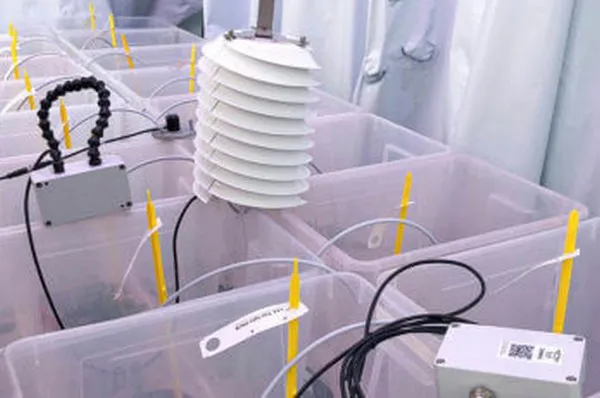
Water (EC/pH) in silos and drip/drain
EC / pH: because we grow everything on clay granule, we only have a small buffer and we can respond immediately to EC / pH values. We have 2 silos with different EC values, high and low (considering the number of different plants we have in our greenhouse, from Sedums to Petunia). We can control watering and EC per 7 tables. We want the pH to be between 5.5 and 6 for both silos. By constantly measuring this, we adjust the amount of water (amount of water and duration of watering). Controlling EC can help to grow. You can control plants with this, but with such a large amount of species (155), it’s not easy.
Pot moisture
Pot moisture is measured by a sensor in the pot. We measure drip and drain and we adjust the pH accordingly. Because the plant should not get too much water, it’s useful to measure pot moisture. Especially with succulents, sedum, and kalanchoe, it can be harmful to give a lot of water.
We grow everything on clay granule and that is why it is very important to monitor the pot moisture, not too dry, not too wet.
Why do you measure these variables? What is the underlying idea?
To allow the plants to grow and keep as vegetative as possible and prevent flowering induction. (Generative parts of a plant are hormonally different and can, therefore, have a negative influence on the tests that we carry out).
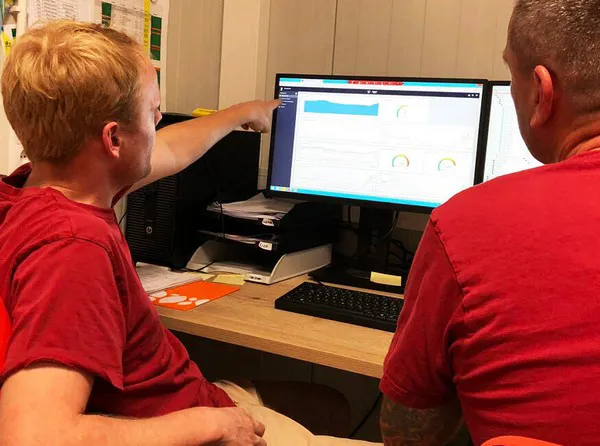
What is done with these insights?
The variables are adjusted to the needs of the plants and how we, as growers, want them to be (vegetative and productive). To prevent plants from flowering, we place them in a place where they do not flower. This can be, for example, that Kalanchoe is on a long day since it will flower on a short day. A production grower has variable hours to control the plant towards flowering so that it starts flowering at the right time. We try to steer that it is not going to flower.
Vegetative is when a plant is in development and not yet flowering. Productive is when a plant continues to grow, so when you see constant renewal at a plant. By constantly keeping the plants on a short day, they can also simply “think” that it is autumn/winter, and do nothing anymore. They then wait until spring (which stays out). We also need to keep these plants productive and vegetative (so actively growing but without flowers).
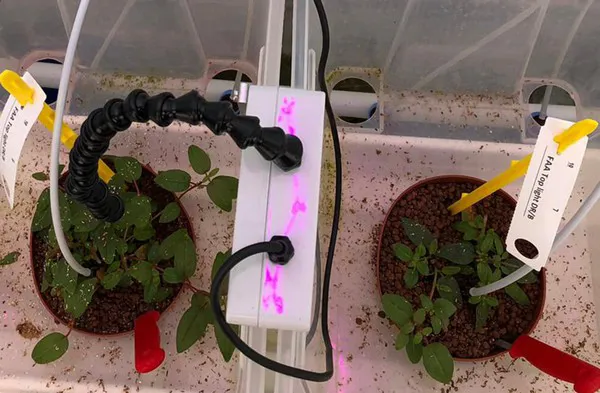
How do you see the future in data collection?
Collecting data is very important to us. We now begin to get data after a year that we can compare with the data from last year to adjust or change plans. It is also very interesting to see that we are making progress, we have a much better view of what is happening in the greenhouse and especially with the plants. We can now explain much more and continue to work on that.
The future of data collection is fully automated, but the assessment of this data is human work, as is the assessment of the plants. When there is one crop, this is easier to automate. Fortunately, not everything is automated, because controlling and reviewing is the best thing about this job for me. By occasionally collecting data manually, you see more and you can make connections faster than if you only get the results.
For more information: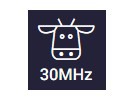 30MHz
30MHz
Moezelhavenweg 9
1043AM Amsterdam
+31 (0) 6 14551362
contact@30mhz.com
www.30mhz.com
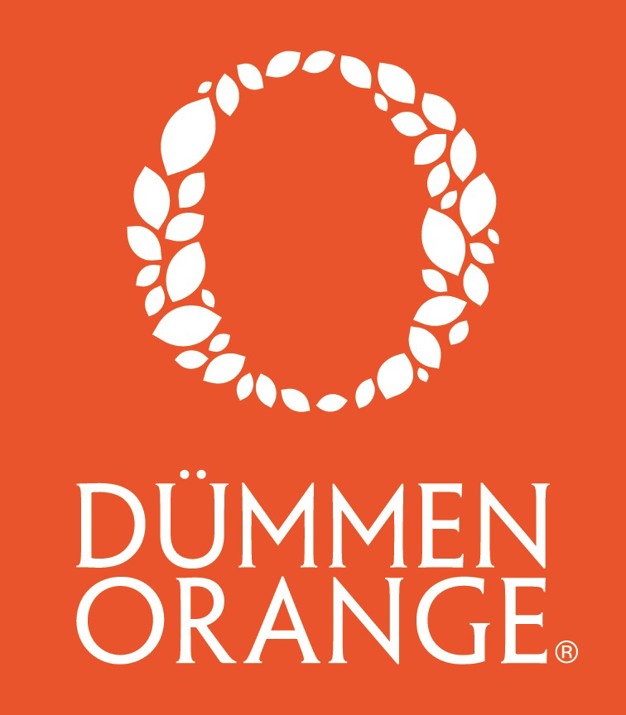
Dümmen Orange
www.dummenorange.com
